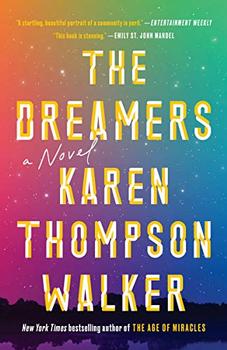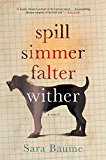Summary | Excerpt | Reviews | Read-Alikes | Genres & Themes | Author Bio

A team of leading US scientists are doing controversial experiments with live smallpox virus at CDC. Preston takes us into the lab where they are reawakening smallpox and explains, with cool and devastating precision, what may be at stake if this last bold experiment fails.
The first major bioterror event in the United States--the anthrax attacks in October 2001--was a clarion call for scientists who work with "hot" agents to find ways of protecting civilian populations against biological weapons. In The Demon in the Freezer, his first nonfiction book since The Hot Zone, a #1 New York Times bestseller, Richard Preston takes us into the heart of Usamriid, the United States Army Medical Research Institute of Infectious Diseases at Fort Detrick, Maryland, once the headquarters of the U.S. biological weapons program and now the epicenter of national biodefense.
Peter Jahrling, the top scientist at Usamriid, a wry virologist who cut his teeth on Ebola, one of the world’s most lethal emerging viruses, has ORCON security clearance that gives him access to top secret information on bioweapons. His most urgent priority is to develop a drug that will take on smallpox--and win. Eradicated from the planet in 1979 in one of the great triumphs of modern science, the smallpox virus now resides, officially, in only two high-security freezers--at the Centers for Disease Control in Atlanta and in Siberia, at a Russian virology institute called Vector. But the demon in the freezer has been set loose. It is almost certain that illegal stocks are in the possession of hostile states, including Iraq and North Korea. Jahrling is haunted by the thought that biologists in secret labs are using genetic engineering to create a new superpox virus, a smallpox resistant to all vaccines.
Usamriid went into a state of Delta Alert on September 11 and activated its emergency response teams when the first anthrax letters were opened in New York and Washington, D.C. Preston reports, in unprecedented detail, on the government’s response to the attacks and takes us into the ongoing FBI investigation. His story is based on interviews with top-level FBI agents and with Dr. Steven Hatfill.
Jahrling is leading a team of scientists doing controversial experiments with live smallpox virus at CDC. Preston takes us into the lab where Jahrling is reawakening smallpox and explains, with cool and devastating precision, what may be at stake if his last bold experiment fails.
 Jonathan Weiner, author of The Beak of the Finch
The Demon in the Freezer is fascinating, frightening, and important. It reads like a thriller, but the demons are real. Richard Preston has a ‘black patent’ on this kind of reporting and storytelling. He is the only writer on the scene who can make the inside story of biological weapons so darkly entertaining. Read this book and pray that its heroes can lock the demon back in the freezer.
Jonathan Weiner, author of The Beak of the Finch
The Demon in the Freezer is fascinating, frightening, and important. It reads like a thriller, but the demons are real. Richard Preston has a ‘black patent’ on this kind of reporting and storytelling. He is the only writer on the scene who can make the inside story of biological weapons so darkly entertaining. Read this book and pray that its heroes can lock the demon back in the freezer. Laurie Garrett, author of The Coming Plague
Richard Preston has brought us another book that reads like a top-notch thriller. Would that it were fiction. As the movie unfolds in your mind, remember this It can happen here.
Laurie Garrett, author of The Coming Plague
Richard Preston has brought us another book that reads like a top-notch thriller. Would that it were fiction. As the movie unfolds in your mind, remember this It can happen here. Richard Danzig, former secretary of the navy
The bard of biological weapons captures the drama of the front lines.
Richard Danzig, former secretary of the navy
The bard of biological weapons captures the drama of the front lines.
If you liked The Demon In The Freezer, try these:

by Karen Thompson Walker
Published 2019
An ordinary town is transformed by a mysterious illness that triggers perpetual sleep.

by Sara Baume
Published 2017
A debut novel already praised as "unbearably poignant and beautifully told" (Eimear McBride) this captivating story follows - over the course of four seasons - a misfit man who adopts a misfit dog.
The single biggest problem in communication is the illusion that it has taken place
Click Here to find out who said this, as well as discovering other famous literary quotes!